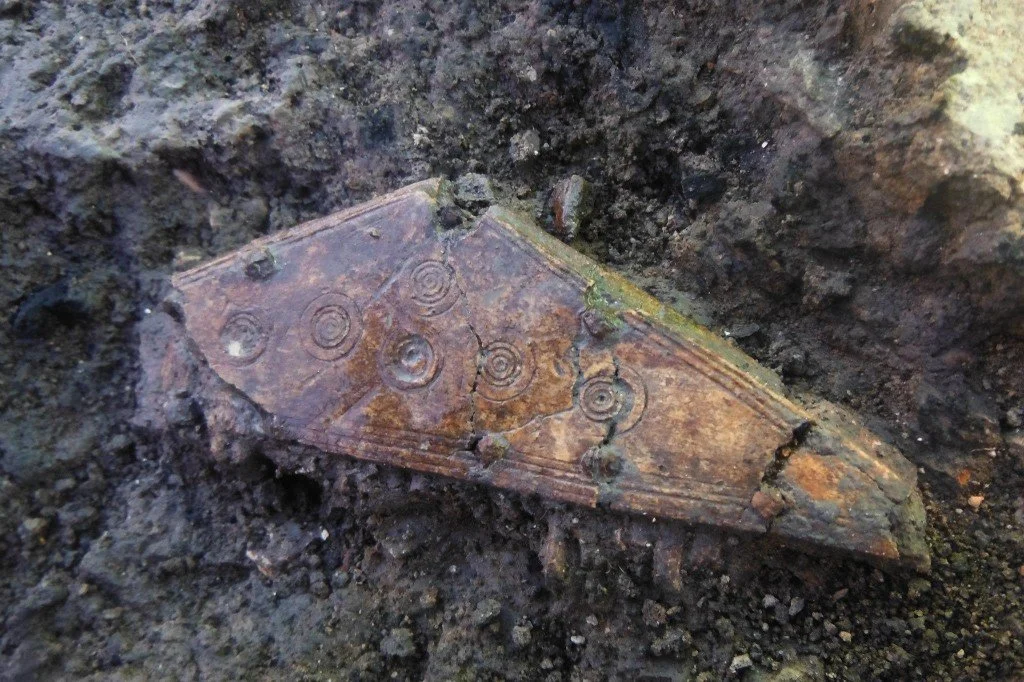Aerial View of the Saxon Hall : University of Reading
A rare Anglo-Saxon feasting hall has been spectacularly uncovered by a team of archaeologists from the University of Reading working at Lyminge in Kent
This is the first discovery of a previously unknown Anglo-Saxon ‘Great Hall’ in over 30 years and one of only a handful of such major buildings to be excavated in its entirety. Large enough to accommodate up to 60 people and forming part of a formal complex of buildings, the hall would have been used as a venue for royal assemblies attended by the king and his armed entourage.
The current excavations, funded by the Arts and Humanities Research Council (AHRC) with support from project partners Kent Archaeological Society and staff from the Canterbury Archaeological Trust, are designed to shed new light on Lyminge as a key site for understanding the origins of Christianity in Anglo-Saxon England.

Previous excavations have shown that extensive remains of a 7th to 9th century Anglo-Saxon monastery lie preserved literally inches beneath open areas of the village; the Great Hall discovered in 2012 represents a royal precursor to the monastery. However a geophysical survey failed to reveal the hall and its discovery was entirely unanticipated.
Dr Gabor Thomas, from the University of Reading’s Department of Archaeology said: “This hall is remarkably well preserved. With a ground-plan in excess of 160m square, the hall is comparable in scale and importance to some of the largest Saxon timber halls previously excavated in England at sites such as Yeavering and Cowdery’s Down.
“The Hall provides an exceedingly rare glimpse of royal accommodation of a type otherwise evoked in the Anglo-Saxon poem Beowulf. Such structures were manifestly not ‘houses’; they were prestigious buildings used at specific times for a specific purpose such as periodic gatherings involving feasting and gift-giving that reinforced the social bonds between the king and his loyal retainers.”
Artefacts recovered from the foundations of the hall provide definitive evidence for high-status activities, most notable being fragments of luxury glass vessels and a rare bridle fitting of a type that has only previously been found in graves belonging to the Anglo-Saxon warrior elite.
Dr Thomas continued: “Nearly all the archaeological information shedding light on Kent around the time of the conversion to Christianity is based upon cemetery finds. The site at Lyminge is the first to provide a detailed picture of life at an aristocratic estate centre in Anglo-Saxon Kent during the height of the kingdom’s political power at the end of the 6th century. Further excavations, funded by the Arts and Humanities Research Council, will be carried out next summer and in the summer of 2014. This exciting project looks set to continue transforming our understanding of how Christianity impacted daily life in Anglo-Saxon England.”







